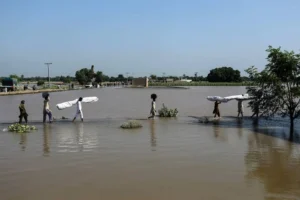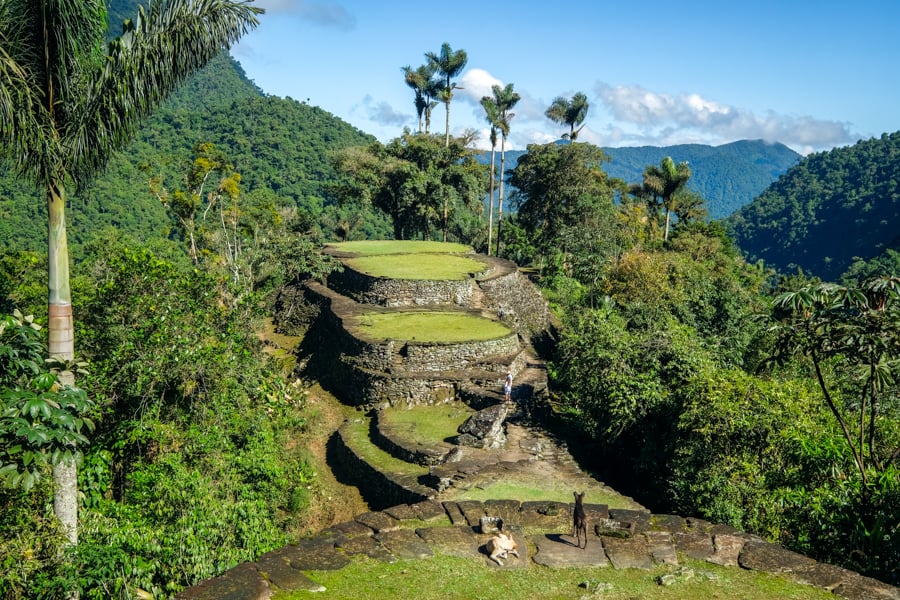Few journeys combine history, adventure, and natural beauty the way The Lost City Trek in Colombia does. Tucked deep in the Sierra Nevada mountains near Santa Marta, the trek leads explorers to Ciudad Perdida, or “The Lost City,” an ancient archaeological wonder older than Machu Picchu. For travelers, hikers, and history enthusiasts, this trek has become one of the ultimate adventure destinations in South America.
The Appeal of the Lost City
What makes the Lost City special is not just its age, but its mystery. Dating back to the 9th century, the ruins were once home to the Tayrona civilization, a thriving indigenous community. Terraces, ceremonial sites, and pathways carved into jungle stone floors still remain intact after centuries of obscurity. Discovered by treasure hunters in the 1970s, Ciudad Perdida has since become a protected site, exclusively accessible through guided multi day treks.
It is this combination of ancient culture, untouched landscapes, and the physical challenge that makes The Lost City Trek in Colombia one of the most sought-after hikes in the country. Unlike a typical day trip, the journey involves days of physical endurance, rewarding participants with breathtaking forest views and cultural immersion.
Journey Through the Sierra Nevada
The adventure begins with steep climbs, muddy paths, and humid conditions typical of the Colombian jungle. Over the course of four to six days, trekkers cover nearly 70 kilometers. Each day requires walking between five to seven hours, scaling hills, crossing rivers, and traversing dense vegetation. Camps along the way offer rustic accommodations, hammocks or bunk beds, and local meals prepared by guides.
What keeps spirits high on this challenging hike is the extraordinary scenery. Towering trees provide shade while tropical birds and wildlife add to the experience. As travelers gradually ascend, the anticipation builds, knowing that ancient ruins are waiting at the end of the trail. Adventurers say that reaching the site makes the physical demands worthwhile. It is this balance of effort and reward that has pushed The Lost City Trek in Colombia into global recognition.
Indigenous Communities and Local Tradition
For many, the cultural dimension adds extra depth to the trek. The region remains home to several indigenous groups, including the Kogi and Wiwa communities, who preserve traditions passed down over centuries. Travelers have opportunities to interact with local guides, learn about spiritual practices, and understand the sacred meaning of Ciudad Perdida.
This cultural respect is a critical reason why tourism is carefully managed. Authorities and indigenous leaders stress sustainable guidelines to ensure the trek does not harm the ecosystem or distort native practices. By walking these paths, travelers are reminded that The Lost City Trek in Colombia is more than a tourist attraction it is a journey through living history.
Physical Challenges and Preparation
The trek demands physical and mental readiness. High humidity, unpredictable rain, and steep terrain test endurance. Hikers often describe it as tougher than expected but equally rewarding. Staying hydrated, carrying light gear, and wearing tough hiking boots are absolute essentials. Travel experts also recommend training beforehand with long hikes and cardio exercise to prepare for the journey.
Despite the challenges, thousands attempt the route every year. For many, the process itself the walking, climbing, and camping—becomes just as memorable as the ruins waiting at the end. With guided tours offering medical support and experienced leaders, The Lost City Trek in Colombia remains accessible even for those with moderate fitness if they travel prepared.
Comparing the Lost City with Other Ancient Sites
Travelers often compare Ciudad Perdida to Machu Picchu in Peru. While Machu Picchu is larger and more accessible, Ciudad Perdida has a unique authenticity. With no train or cable car access, only hikers who commit to the multi day trek can visit. This exclusivity keeps visitor numbers relatively low and preserves the untouched feel of the site.
Some argue that Machu Picchu has become over commercialized due to its global fame, while The Lost City Trek in Colombia offers a sense of discovery, as if walking into a hidden chapter of history. The quieter paths and personal achievement enrich the experience with an element of adventure that feels deeply personal.
Eco-Tourism and Preservation
Colombia has placed great emphasis on sustainable tourism in the Sierra Nevada. Park authorities limit the number of daily trekkers, and strict rules guide the treatment of waste, wildlife, and indigenous villages. Environmentalists highlight this as a model where eco-tourism directly funds preservation.
Income generated from tours contributes to protecting the site, maintaining pathways, and supporting indigenous communities who view Ciudad Perdida as sacred. In this respect, The Lost City Trek in Colombia has become both a cultural and environmental initiative, balancing tourism with responsibility.
The Spiritual Experience of Reaching Ciudad Perdida
Reaching the lost city itself is often described as emotional. After climbing 1,200 stone steps carved centuries ago, travelers step onto wide terraces where ancient ceremonies once took place. The sight of stone rings, platforms, and jungle shrouded ruins often evokes awe, as if stepping back in time.
For many, this final moment transforms the trek into more than just hiking—it becomes a spiritual journey. Knowing the Tayrona civilization thrived here centuries before modern infrastructure existed, and that the jungle preserved it in silence for hundreds of years, makes The Lost City Trek in Colombia one of the most magical experiences in Latin America.
Practical Information for Hikers
Treks can only be done with licensed operators, ensuring safety and respect for the site. Prices start around $350–$500 per person, including guides, meals, accommodations, and permits. The best time to go is during the dry season between December and March, although the trek is available year-round. Rainy months may bring extra challenges due to slippery trails and swollen rivers.
Visitors should carry light yet efficient gear: a rain jacket, comfortable clothing, insect repellent, and a refillable water container. Wi-Fi and phone signals disappear along the way, offering a complete disconnection from modern life—something many hikers consider part of the experience.
Looking Ahead: The Future of the Trek
As Colombia continues building its reputation as a safe and welcoming travel destination, more tourists are expected to attempt the trek in coming years. Authorities are balancing this popularity with preservation efforts, ensuring that mass tourism does not damage the fragile ecosystem.
Sustainable growth means future generations will also be able to enjoy the wonder that The Lost City Trek in Colombia provides. With responsible tourism and cultural respect, Ciudad Perdida is set to remain an unforgettable journey for decades to come.
Conclusion
Adventurers around the world are constantly seeking meaningful travel experiences, and few can rival The Lost City Trek in Colombia. It is a hike that demands strength yet rewards travelers with culture, history, and natural beauty that lingers long after the journey ends. For anyone eager to step into an ancient world while embracing a demanding adventure, Ciudad Perdida remains one of the ultimate off-the-beaten-path treasures.

















